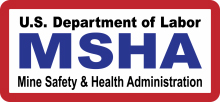MSHA, OAIMA issue mine site safety alert
 The Mine Safety & Health Administration (MSHA) and Ohio Aggregates & Industrial Minerals Association (OAIMA) issued a mine site safety alert to help focus the industry and public’s attention on MSHA’s “Stay Out – Stay Alive” initiative.
The Mine Safety & Health Administration (MSHA) and Ohio Aggregates & Industrial Minerals Association (OAIMA) issued a mine site safety alert to help focus the industry and public’s attention on MSHA’s “Stay Out – Stay Alive” initiative.
According to MSHA, records show that about 30 people lose their lives at mines each year, and more than 60 percent of these fatalities are a result of drowning while swimming, diving, partying, boating or fishing in quarry lakes. The highest percentage of victims are teenagers and those in their twenties, MSHA adds.
MSHA included a number of hidden hazards at mines, including:
- Rock piles and ledges in water-filled quarries and pits
- Old machinery
- Deep, dangerously cold water
- Steep, slippery rock walls
- Hills of loose material
- Eroded berms
- Unprotected, excavated or hidden vertical shafts
- Oxygen-deficient mine tunnels
- Lethal concentrations of deadly gas/toxic atmospheres
- Unused or misfired explosives
- Weak horizontal openings that can cause cave-ins
MSHA’s “Stay Out – Stay Alive” initiative is a national public awareness campaign aimed at warning children and adults about the dangers of exploring and playing on active and abandoned mining sites. Launched in 1999, the campaign is a partnership of federal and state agencies, private organizations, businesses and individuals. Through the initiative, MSHA and its partners visit schools, communities and youth organizations around the United States to educate children, adults and communities about hidden hazards in mines.
MSHA plans to continue to host walk and talks at mine sites and to enlist the assistance of mines, miners and mining industry groups in an effort to make people aware of the dangers of trespassing in mines. MSHA and OAIMA encourage mine operators at active mines to assess the hazards at their sites; construct or repair fences, gates and berms; post additional signage or broadcast public service announcements in the local media; or participate in local news television or radio talk shows to make the public more aware of the hazards.









